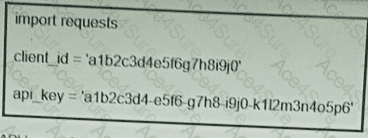The API key is a secret token that is used to authenticate the client to the server. It is functionally equivalent to a username and password, and should be treated as such. The API key is passed as part of the HTTP header in the request, using the Authorization: Basic scheme. The API key is combined with the client ID and encoded in base64 format. For example, if the client ID is d16aff14860af496e848 and the API key is d01ed435-b00d-4a4d-a299-1806ac117e72, the HTTP header would look like this:
Authorization: Basic ZDE2YWZmMTQ4NjBhZjQ5NmU4NDg6ZDAxZWQ0MzUtYjAwZC00YTRkLWEyOTktMTgwNmFjMTE3ZTcy
The server then decodes the header and verifies the credentials. If the credentials are valid, the server grants access to the requested resource. If the credentials are invalid, the server returns an HTTP 401 Unauthorized error.
The API key performs the function of HTTP authentication, which is the process of verifying the identity of the client. HTTP authentication is different from HTTP authorization, which is the process of determining the permissions of the client. HTTP authorization is based on the scope of the API credential, which can be either read-only or read & write. The scope determines what actions the client can perform on the Cisco AMP for Endpoints data.
Importing requests is not a function of the API key, but rather a Python module that allows sending HTTP requests. Playing dent ID is not a meaningful term in this context. Therefore, the correct answer is C. References:
Secure Endpoint API - Cisco DevNet
Overview of the Cisco AMP for Endpoints API - Cisco
Configure AMP for Endpoints Event Stream Feature - Cisco

